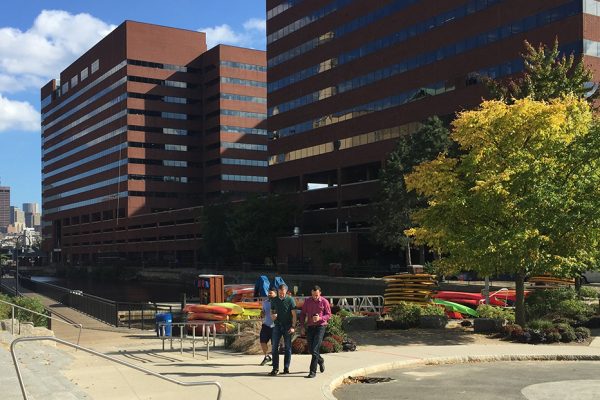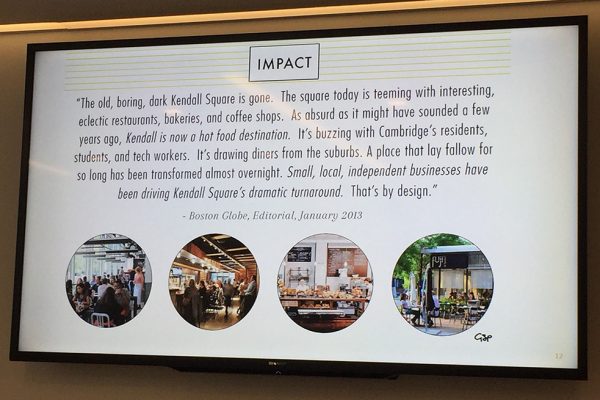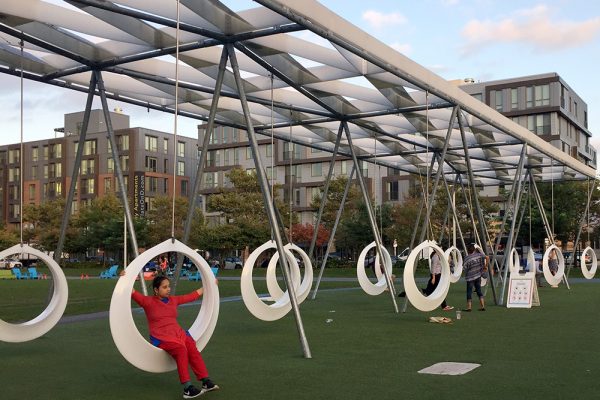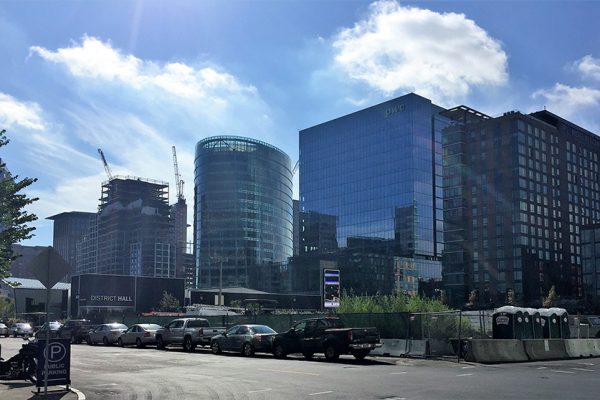In October, I was fortunate to attend the 2018 ULI Fall Meeting in Boston as a recipient of a scholarship for local public officials from the Rose Center for Public Leadership in Land Use. The conference attracted over 6,000 industry leaders in real estate and land use and was a wonderful opportunity to get out of the day-to-day bubble of planning and land use in Montgomery County and learn about trends in other parts of the country to inform our work.
Particularly valuable were the site tours and sessions offered by the ULI Placemaking Council during the Council Day on Wednesday. The program comprised visits to the new Seaport District in South Boston adjacent to the Convention Center and Kendall Square adjacent to MIT in Cambridge, as well as several group discussions in the morning and at lunch.
As a native of the Boston region, but having not spent much time there recently, it was amazing to see the transformation of the city resulting from the Big Dig and reconnection to the waterfront. New business districts, waterfront access and open spaces have revived these formerly industrial areas into vibrant urban neighborhoods. They provide inspiration for the compact, mixed-use suburban communities we envision here in Montgomery County.
One of the key themes that emerged from the Council Day and across other sessions was the importance of authenticity in making great places. Lessons learned include the following:
- Great places have a mix of activities that attract both locals and tourists (defined as regional and national visitors). Places that just serve neighborhood residents provide important local services but can be limited in scale due to the size of the market. Places that just serve tourists can begin to lose their sense of authenticity and connection to the place.
- Replication without innovation doesn’t succeed. We can’t take what has worked in San Antonio and assume it will work in Chicago. Great places need to be grounded in the unique characteristics of local assets and create experiences tailored to specific locations.
- Highly educated and mobile workers have choices about where they want to live and work. Developing great places for this population is a key component of economic competitiveness for both individual companies looking to retain employees as well as municipalities looking to retain companies.
- The model of retail following rooftops is changing and often developers need their projects to make the market first to attract residents and workers. People need a reason to visit or be in a place. However, financing these types of places can be challenging as investors have choices about where to place their money and may not want to be the first entrants into a market.
- While retail is important to activation, the importance of programming and other amenities, such as opening river access for kayaking, cannot be underestimated. Business district managers are increasingly necessary to coordinate programming and marketing.
- Seasonality is becoming more and more important to keep in mind given climate change and severe weather patterns. Approaches to this challenge vary, but they typically require creating indoor or heated spaces for cold weather and ensuring appropriate shade for sun-drenched areas.
- Development of great places requires space for the place to evolve once it is completed. People involved in the development (planners, architects, and developers) often want to have a fully prescribed vision. But sometimes the best solution is to provide spaces for the users to leave their imprint and adapt the place for their needs.
In addition to the ULI Placemaking Council events, Fall Meeting provided informal opportunities to interact with people representing diverse roles in the real estate industry and understand the different ways they look at the same issue. Similarly, it was enlightening to talk with the other Rose Center scholars about what is happening in their jurisdictions. Many are facing similar challenges, such as the scarcity of affordable housing, and others are facing different challenges, such rapid employment growth.
The depth of conversations was one of the most valuable aspects of the program. I wrote in my application for the Rose Center Scholarship program that one of the reasons I wanted to attend ULI Fall Meeting was to reconnect with old friends and make new ones. My experience certainly met that objective and I am excited about applying the knowledge I gained to the Planning Department’s work in Montgomery County.




Katya Marin
These are incredibly valuable lessons for Montgomery County as we continue to grow and evolve. I think some of them have come into play organically but many need careful attention. These are particularly relevant to the project in the works at the Farm Womens Market site in Bethesda, i.e. keeping the Wisconsin Avenue (commercial) side open to the eastern (residential side, and leaving space for the site to evolve. And why start with an obtrusive (IMO) retail pavilion in the middle of the park instead of waiting to see how the space wants to be used?